Tag_AQUASTAT
Type of resources
Available actions
Topics
Keywords
Contact for the resource
Provided by
Years
Formats
Representation types
Update frequencies
status
Scale
Resolution
-
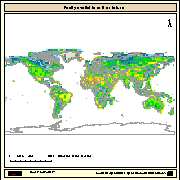
Grid with estimated easily available soil moisture in mm/m with a spatial resolution of 5 * 5 arc minutes. Information with regard to easily available soil moisture was calculated from the "Derived Soil Properties" of the "Digital Soil Map of the World" which contains raster information on soil moisture in different classes.
-
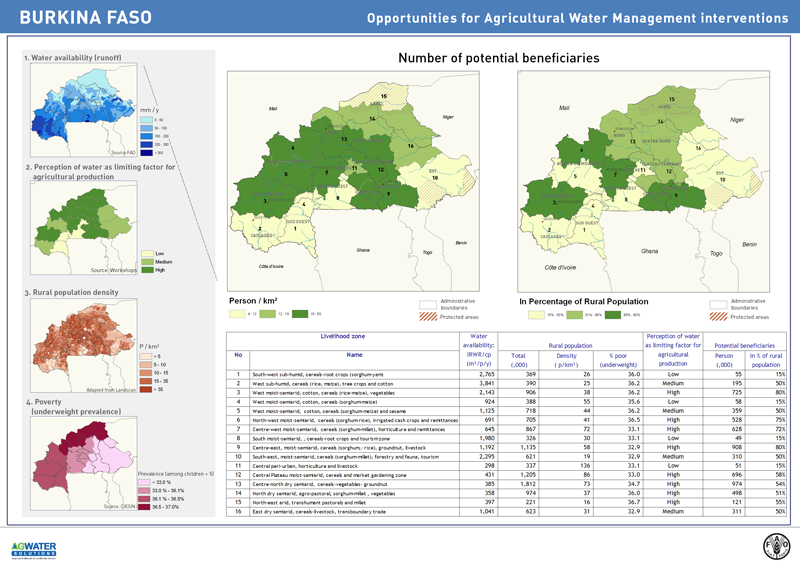
The potential for investment in agricultural water management (AWM) in support to rural livelihoods is assessed as a function of the demand from rural population and the availability (supply) of the resource. This map shows the distribution of rural population who could benefit from water-related interventions. The level of demand is based on the analysis of the livelihood zones, combined with poverty level. The supply is a function of availability of water, calculated on the basis of water (Internal renewable water resources) per person, with water development being constrained below the threshold 1700 m3/p.
-
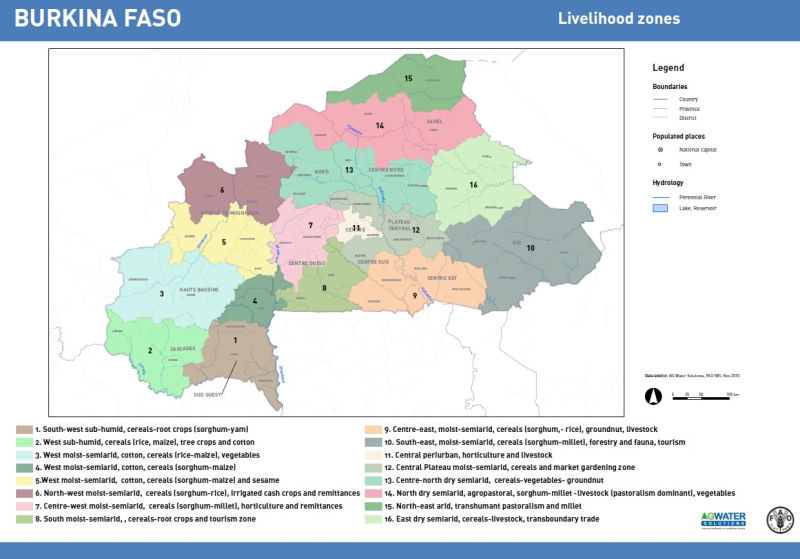
-
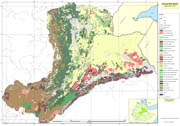
Awash River Basin land cover data used for the project GCP/GLO/207/ITA. Source Ministry of Agriculture and Rural Development.
-
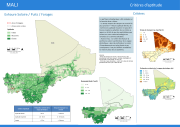
Physical suitability for Wells, boreholes and solar pumping devices Travel time to markets: Setting a threshold < 4 hours High suitability, 4-8 hours Medium and >8hours low we refine a bit more the suitability. Input grid: Travel time to the closest city with more than 20.000 inhabitants. (http://www.fao.org/geonetwork/srv/en/main.home?uuid=e0 8b8b0c-8c5f-44b9-bbcf-45a14db88975) Groundwater potential: An estimated Static Groundwater Level Depth has been generated by interpolating a boreholes georeferenced database provided by the Ministère de lâHydraulique du Mali. This factor is directly related with the suitability from an economical approach, we assume that the deeper is the static level the higher are the investment costs.
-
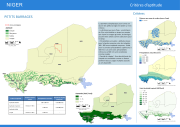
Physical suitability for Small dams has been assessed on the basis of: Proximity to surface water by establishing a 5 km distance buffer from rivers and lakes. Livestock density due to it is assumed that small damsâ reservoirs will have multi use purposes. Rainfall: Zones with moderate to high rainfall rates (from 300mm/year) are considered favorable for the development of this technology.
-
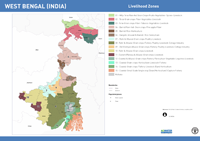
Livelihood zoning consists in identifying areas where rural people share relatively homogeneous living conditions, on the basis of a combination of biophysical and socio-economic determinants. The main criteria to establish livelihood zones are: the predominant source of income (livelihood activities); the natural resources available to people and the way they are used; and the prevailing agroclimatic conditions that influence farming activities. Patterns of livelihood vary from one area to another, based on local factors such as climate, soil or access to markets. The analysis delineates geographical areas within which people share similar livelihood patterns: source of living, access to food, farming practices, including crops, livestock and access to markets. The map of livelihood zones is the main output from a participatory mapping workshop and forms the basis for the overall AWM assessment. It describes and geographically locates the different country livelihood contexts, focusing on the main smallholdersâ livelihood strategies, their water-related problems and other constraints for development, and the role agricultural water management plays for their livelihoods. An attribute table provides a detailed description of each livelihood zone.
-
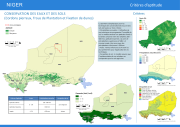
Physical conservation for Soil and water conservation techniques has been assessed on the basis of slope, climate and land use. The SW conservation techniques assessed are: plantation holes, dune fixation and contour stone bunds. Slope: flat zones are considered as the most suitable for the implementation of these technologies. Rainfall: Zones with moderate to high rainfall rates (from 250mm/year) are considered favorable. Land use: Using as input the Globecover land use grid, a boolean mask has been generated to concentrate the suitability evaluation only on agricultural lands.
-

GlobWat uses spatially distributed input layers consisting of monthly precipitation, number of wet days per month, coefficient of variation of precipitation, monthly reference evapotranspiration, maximum soil moisture storage capacity, maximum percolation flux, irrigated areas, land use, and areas of open water and wetlands. All these input layers are based on freely available spatial dataset with a resolution of 10 arc minutes for the climate dataset and 5 arc minutes for all the terrain and land dataset (data sources are provided in the downloadable files). The water balance is calculated in two steps. First a vertical water balance is calculated that includes rainfall dependent evapotranspiration and evapotranspiration from crops under irrigated circumstances (for which it is assumed that it can be provided by surface water or groundwater). In a second stage, a horizontal water balance is calculated to correct for incremental evapotranspiration from open water and wetlands and to calculate discharges from river (sub-) basins taking into consideration the water needed for irrigation.
-
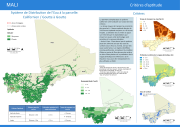
Physical suitability for Drip irrigation and low pressure irrigation systems (Californian) has been assessed on the basis of: Travel time to markets: Setting a threshold < 4 hours High suitability, 4-8 hours Medium and >8hours low we refine a bit more the suitability. Input grid: Travel time to the closest city with more than 20.000 inhabitants. (http://www.fao.org/geonetwork/srv/en/main.home?uuid=e0 8b8b0c-8c5f-44b9-bbcf-45a14db88975) Groundwater potential: An estimated Static Groundwater Level Depth has been generated by interpolating a boreholes georeferenced database provided by the Ministère de lâHydraulique du Mali.A 15 m depth threshold was stablished as the limit pumping height. Proximity to surface water (1km buffer distance)
 FAO Map Catalog
FAO Map Catalog